| If I Ran Star Trek, part two
By Michael David Sims
31 August 2018 — Though Star Trek has its roots in television, it is the rare franchise that has successfully crossed into movie theaters. Moreover, it did so using the same actors and continuity. Without a reboot or a single recasting, in 1979 Star Trek: The Motion Picture was released in cinemas. The only real changes were updated uniforms and a redesign of the iconic Enterprise. By transitioning from small to big screen, the characters, actors, filmmakers, and franchise were allowed to grow. It's great having 45 minutes to tell a story, but give creatives 90 minutes, two hours, or more of screen time and suddenly the characters have been infused with new life. They've grown in ways episodic television rarely allows.
Imagine trying to bring the layered nuance of The Wrath of Khan, the epic scale of First Contact, or the sheer silly joy of The Voyage Home to a condensed 45-minute medium. That's not to knock Star Trek's lush, often ambitious television history. Quite the opposite. It's simply meant to reiterate that Star Trek can be different things for different mediums, and each medium provides creators the chance to reshape and reimagine Star Trek in a whole new light.
That said, in the first part of this series I barely scratched the surface of possible Star Trek television programs. It was my aim to push the boundaries of the franchise be. Today I will do the same but with feature films. We've had amazing Star Trek movies over the decades, all of which embraced the core idea of Star Trek while nudging it into new directions. Let's have some fun and do the same.
DEPARTMENT OF TEMPORAL INVEGTIGATIONS
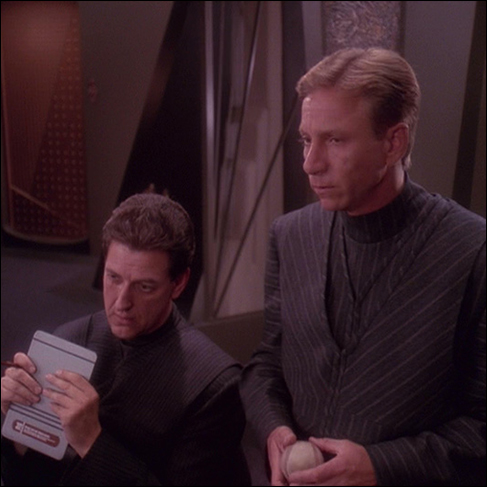
First seen in "Trials and Tribble-ations," the Department of Temporal Investigations (DTI) is tasked with the unenviable chore of investigating temporal anomalies and occurrences that happen within The Federation. During their one on-screen appearance, agents Dulmur and Lucsly not only grill Captain Sisko about his recent jaunt back to Kirk's Enterprise, but also casually mention Kirk's numerous "temporal violations." Through this interaction we come to understand that DTI agents are under a fair amount of stress.
Here they are overseeing a stable timeline, one in which we're not overrun by The Borg, our evil counterparts, or literal Nazis, while captains of starships fling themselves around the galaxy, skipping about time by accident or design. Sure, the captains — barring one I shall not name — attempt to fix any damage they've created by traveling through time. However, they cannot be sure even the smallest action in the past has not set in motion an avalanche of universe-spanning alterations to time. And that's where the agents of DTI come in. They oversee a quantum-locked historical record. Should they detect any temporal anomalies, said record is consulted to ensure nothing of note has cracked time and rewritten history.
Sometimes, though, anomalies cannot be closed or corrected. Sometimes people shift through time, winding up stuck in the 24th century. And that's the thrust of this movie.
Taken in part from the novel Department of Temporal Investigations: Watching the Clock by Christopher L Bennett, Department of Temporal Investigations would follow Teresa Garcia after she is shunted 20 years into the future. With no chance of returning home, Garcia opts into the DTI program and quickly excels. After a brief-yet-rigorous six months of training, she becomes a Junior DTI Agent. Teamed with Meyo Ranjea, the two begin to investigate a heretofore-unknown stable rift in time. One which allows constant up- and down-stream traffic. One which has a TARDIS-like hub nesting at its core. One which is overseen by a group that does not want to play by DTI's rules and regulations.
Garcia and Ranjea quickly discover a conspiracy to gently rewrite the past in order to silently alter the present. With no way to fix the changes in the present, Garcia and Ranjea break every DTI protocol and use the rift to head backwards in time to undo the work of the time-saboteurs. Along the way, they discover another DTI agent, one from the 31st century: Jena Noi. But what are her intentions, and can the 24th century agents trust their 31st century counterpart?
As noted, this proposed film is inspired by the novel Department of Temporal Investigations: Watching the Clock by Christopher L Bennett, which I am less than halfway through. Suffice it to say, I'm not spoiling anything. The full scope of the novel has yet to present itself. It's simply a wonderful template to utilize as a launching pad. The reason being Garcia.
Following agents Dulmur and Lucsly would be an easy thing to do, as they are established characters and seasoned agents. But where's the fun in that? A point-of-view character is always the way to go. Why do you think police procedurals and legal dramas often begin with newly hired rookies? Said rookies can ask the questions we want asked, they see everything with new eyes, and they can make mistakes without seeming foolish or unprofessional. And that's the joy of Garcia in Department of Temporal Investigations. Not only is she a freshly badged DTI agent, she's out-of-time by 20 years. Her family is just as alien as the new races she's encountering. No matter how smart and observant she may be, Garcia will always be a fish out of water. And that can provide equal parts drama, comedy, and sympathy, all while holding an open hand to us as we experience a new way of looking at Starfleet, The Federation, and Star Trek.
JOHN HARRIMAN
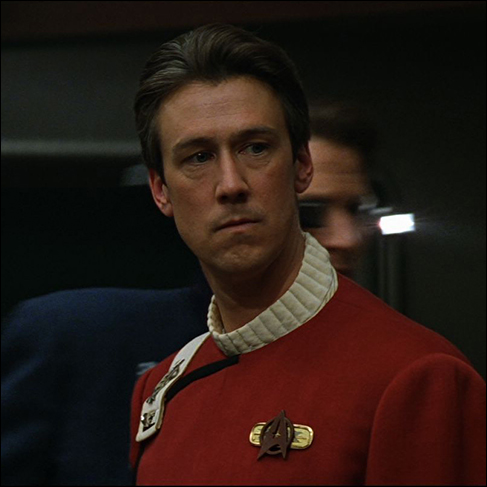
The year is 2293. You have been appointed captain of Starfleet's newest flagship: USS Enterprise NCC-1701-B. On its maiden voyage the most iconic Starfleet captain of all time, James Tiberius Kirk, gave his life saving your newly christened ship. Though his death was not your fault, that stigma and shame will forever be your cross to bear.
The year is 2329. You have pushed away friends, family, and even your therapists over the last 36 years. You resigned your commission for a desk job. You loathe your very name. You are isolated in a vast utopia. And today everyone is reminded of your shame. Today your former ship comes home to be decommissioned. You look at the news and your ship is everywhere. Its accomplishments without you, Kirk's heroic sacrifice, your failure.
Your name is John Harriman. You are the most hated man in Starfleet.
Yes, I see this Star Trek film as an indie drama about a self-loathing man working a job he hates.
As noted in the first part of this series, I truly believe Star Trek can be anything. Even this. One doesn't have to dig too deep to see there's precedent for this kind of character-based, emotionally bleak storytelling in Star Trek, either. Just look at "The Inner Light," "Family," "It's Only a Paper Moon," and "The Visitor" for perfect examples of Star Trek narrowing its focus to discuss deeply personal events.
The only difference here is that the Star Trek films have never endeavored to be anything but sci-if / action movies. (With maybe the exception of The Motion Picture. That was very much trying to be just as heady as 2001: A Space Odyssey.) But let's stretch those legs. Star Trek has dozens of amazing one-off characters like Harriman, characters with rich stories to tell based on what we've already been shown and told. Each of them is worth exploring one way or another, and Harriman provides us a chance to look at PTSD and depression in Star Trek.
Would it make half a billion dollars? No, but it isn't designed to. It's designed to humanize and redeem a character many fans have loathed since his one on-screen appearance, and to open new avenues in which to see The Federation at the street level.
We have seen hundreds of planets, moons, starbases, and colonies, yet, even after 50-plus years, I feel like we really haven't seen The Federation. Into Darkness gave us a glimpse with Noel Clarke's tortured father character, and Deep Space Nine set a handful of episodes in Joseph Sisko's New Orleans restaurant. But what else have we seen? What else do we know? Through a John Harriman-focused film we would get to see markets and offices, family life and non-colleague friendships, dates at restaurants and 23rd century popular culture. It's odd to say, but The Federation is untapped, fertile ground. We're not going to see any of that with space exploration and ships shooting torpedoes at each other. We're only going to see that by following one man on a path of healing, self-acceptance, and redemption.
USS ENTERPRISE NCC-1701-C
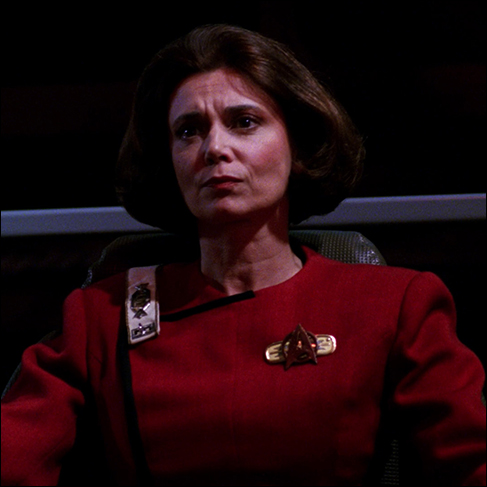
If the previous movie was an attempt to drill down on an individual, this gets us back to space-battle basics. We're not talking about one movie here. This is a brand new franchise looking at the adventures of the ill-fated Enterprise C.
In service for 12 years (2332-2344), even in real-time that would allow filmmakers the chance to make three to four movies with three- to four-year gaps in between. Or, ignore the realities of time, and producers could stretch that 12-year window into five, six, or even more movies — after all, many of the cinematic adventures take place over no more than a few days. This would allow creatives and actors ample amount of time to flesh out this previously unseen era of Star Trek. Furthermore, there are only two pieces of continuity this franchise must adhere to: the final mission and the crew at that moment. Otherwise, anything is possible in this prime universe series.
Without the shackles of continuity, characters suddenly become expendable, creating an actual sense of dramatic tension in life and death situations.
What do I see plot wise? Anything.
This is at a time when Federation / Klingon relations were at an all-time low, so there is plenty of potential for several movies with Klingon villains. While some people might say we have had plenty of Star Trek movies with Klingon foes, I would counter with yes, but: Generations was released in 1994 and the Duras Sisters were more henchwomen than actual antagonists. So then we would have to go back to 1991 and The Undiscovered Country for the last time Klingons were truly the lead foes to vex our heroes. But that's besides the point. Klingons are awesome, and make for perfect villains.
Then there are the Romulans, who have never been movie villains. (What's that? No. Don't point at Nemesis or the 2009 reboot. The former had Remans, and the latter had a bunch of industrial metal kids calling themselves Romulans because it sounds cool.) We have never had a masterclass like "Balance of Terror" or "The Defector" showcasing the true manipulative mental might of Romulans in the cinema. And that is a crime.
So we have our established antagonists, what about new ones? This is always a problem when producing Star Trek media set in a pre-24th century timeline. When we're shown new races in the 22nd and 23rd centuries, one cannot help but wonder where they were during the 24th. What happened to the Denobulans and Suliban? Forget that, though, because I have a workaround. One of antagonists could be a race hellbent on laying waste to The Federation not because they are cackling, one-dimensional, mustache twirlers, but because their people are dying off at the same time The Federation is encroaching on their territory. Now we know The Federation would never willingly take land from people (except when they do), but these people would not know that. As an already-shrinking population, they are scared. With no other options, they put all of their system-wide resources into a small fleet of vessels meant to cut through anything Starfleet might throw at them. So what we have here is an allegory for imperialism, manifest destiny, and preemptive strikes. In this case, even though The Federation wasn't going to forcibly take their planets, they were pushing in on their borders and would have eventually made the "we come in piece" speech. And these so-called villains are nothing more than a frightened people who already see their inevitable extinction. When the dust has settled, so few of them are left, thus explaining why we've never heard of them in any of the shows set during the 24th century. Tragically, they accelerated their demise. The result for us is win-win, however, as it creates new alien races, shows both sides in positive and negative lights, allows filmmakers to address meaningful themes, and does not rely on old foes.
Lastly, but most importantly: Captain Garrett would be our first big screen female captain. While Admiral Janeway did make a cameo in Nemesis, she was not helming a ship. So yes, this is an important glass ceiling long overdue for shattering.
ANYTHING BUT THE ENTERPRISE
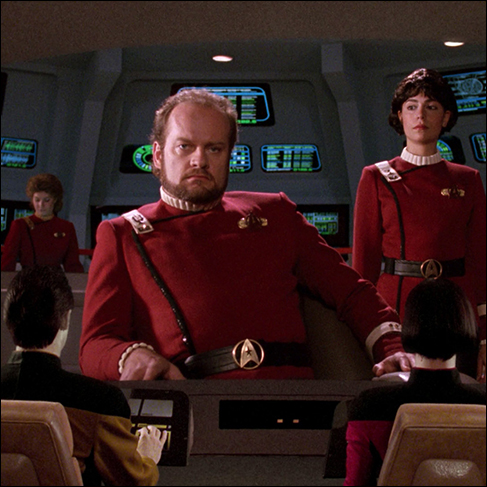
Of the 13 Star Trek movies that have been produced between 1979 and 2016, only one of them has not featured The Enterprise. But even that's a cheat, because The Voyage Home still focused on Kirk and company as the zipped through time in Kruge's Klingon Bird-of-Prey. So the movie was still all about Kirk, Spock, and the rest of the crew we already knew and loved.
What I want to see is a Star Trek movie that does not focus on the flagship of The Federation. Let's meet the crew of the rickety bucket that makes deliveries between systems. Let's follow the captain and her crew of science officers as they explore gaseous planets. Let's see how a cocky rookie captain handles himself when he's given a 65-year-old ship. Let's follow a new Stargazer. The time-displaced Bozeman is out there. Let's see what happens when there's a disaster aboard a ship and a very green lieutenant must take command after the captain and all other members of the command crew are lost in battle. Hell, let's see what Captain Riker and Commander Troi are up to over on the USS Titan.
The point is, I really don't care about the who and the what in this situation. I just want to see another crew and another ship up there on the big screen. It doesn't have to kick off its own franchise; it can be a one-off. There's an entire fleet of starships, yet we've only seen one (and its namesakes) cinematically.
RED SHIRTS
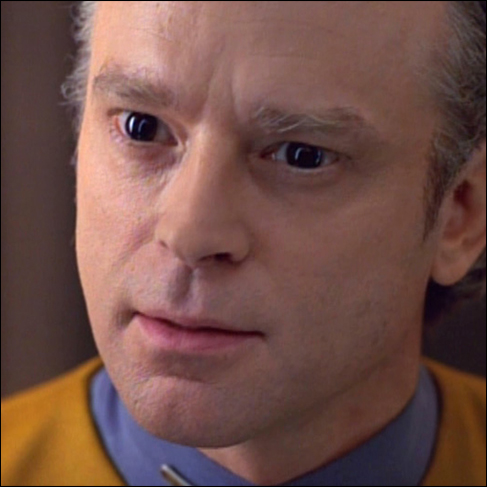
While Star Trek has tipped its toe into horror, a dozen or so episodes out of hundreds is barely a blip on the radar. Plus, those episodes usually wind up being dreams ("Distant Voices"), something caused by a virus ("Genesis"), or a non-human threatening the lives of our heroes ("Empok Nor"). What I want to see are the horrors we inflict upon ourselves. Don't give me an acid-blood alien, a portal through hell, a resurrected slasher, or a sun-soaked man. Give me a very real, very human murderer in space.
To its credit, Voyager attempted to deal with this through Lon Suder, but the show sought to seek his redemption rather than focus on the fear felt around the ship and the way it would unbalance the crew. It's one thing to set a slasher-killer in a small Midwestern town. If you need to get away, you can jump into a car and drive the hell out of there. It's another thing entirely when it's a closed environment. When the only path to freedom is a hatch leading into the cold void that is space, what do you do? When the nearest ship is 16 hours away, can you survive? What happens when the killer knows the ship like the back of his hand and can crawl through any Jefferies tube to cut you off? Or when he uses the transporters to appear in front of or behind you at any given moment? What happens when your world is completely computer-controlled, allowing any door to be hacked? How does one hide when life signs can be detected with tricorders?
Though we've seen sci-fi horror movies, we've not seen one the likes of which Star Trek would allow. Starfleet ships are amazing pieces of technology, but imagine the nightmare they'd become under the control of an engineer who's snapped from the constant pressure put upon him by a captain's endless, unreasonable deadlines and demands.
The title of this one, Red Shirts, is an obvious homage to the trope of killing the red-shirt-wearing security guards of the original series. However, in this instance it's a direct reference to the blood our hero will find herself covered in, and a nod to Shaun of the Dead.
* * * * *
While many of these movies don't require the Star Trek brand on them, making movies like these with the Star Trek banner is something so very new. I guarantee you people would not stop talking about a bone-chilling horror movie set against the safe, familiar backdrop of a Federation starship. And when people see something new done with something old — when their expectations are outright smashed to bits — you've got something on your hands.

.: about :: donate :: contact :.
© 2004-2026 its respective owners. All rights reserved.
|

